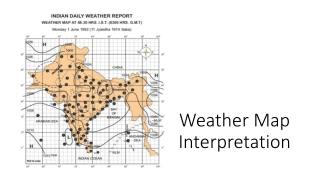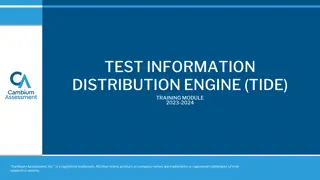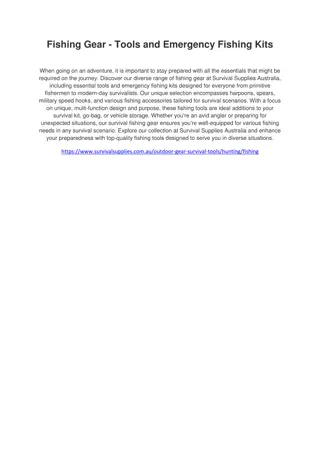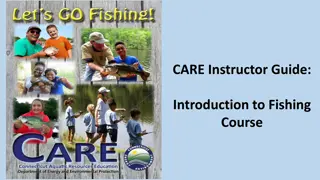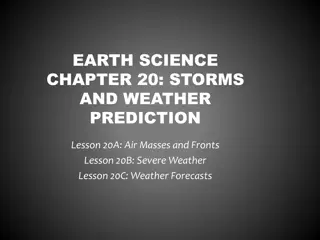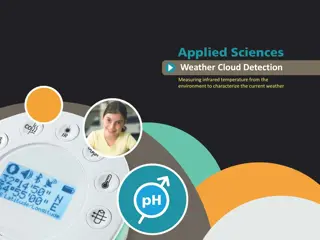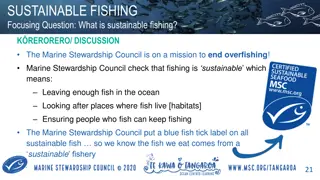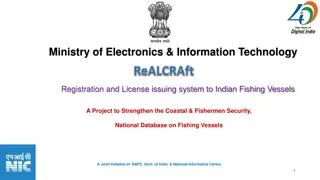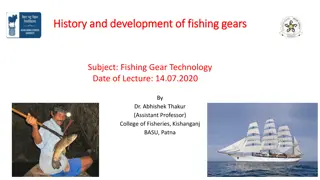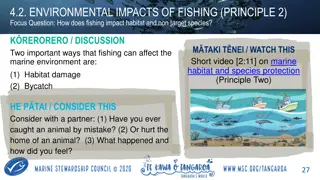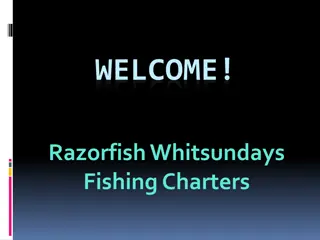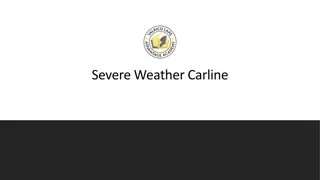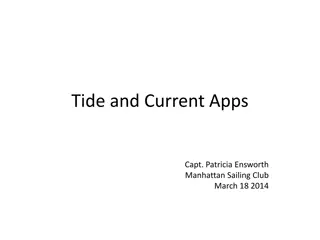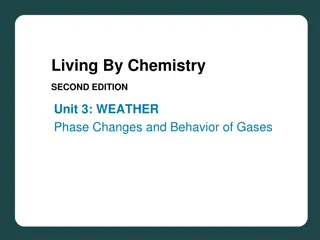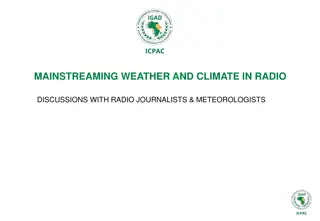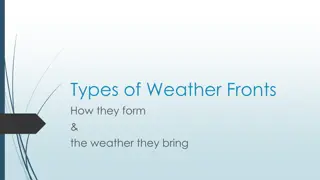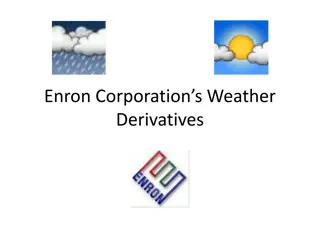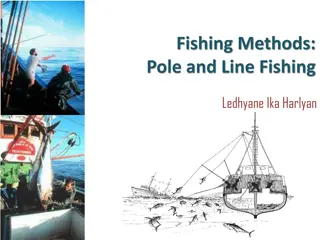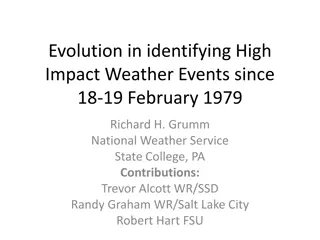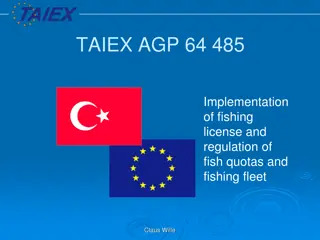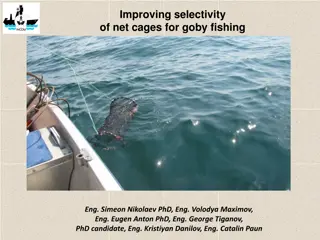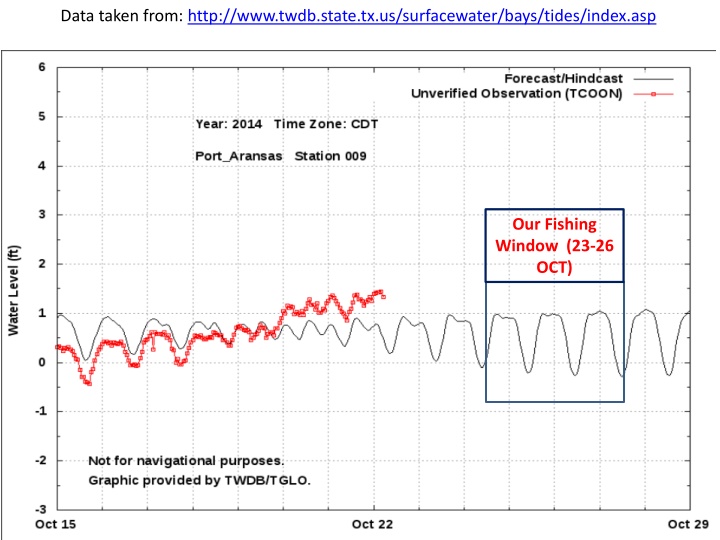
Fishing Tips Based on Tide and Weather Conditions
Utilize tide data from the TWDB and NOAA wind forecasts for successful fishing trips. Understand tide changes, water levels, air pressure, and more to plan your fishing strategy. Learn about high and low tides, barometric pressure readings, and how they affect fish behavior. Enhance your fishing knowledge with practical insights and make informed decisions for your next angling adventure.
Download Presentation

Please find below an Image/Link to download the presentation.
The content on the website is provided AS IS for your information and personal use only. It may not be sold, licensed, or shared on other websites without obtaining consent from the author. If you encounter any issues during the download, it is possible that the publisher has removed the file from their server.
You are allowed to download the files provided on this website for personal or commercial use, subject to the condition that they are used lawfully. All files are the property of their respective owners.
The content on the website is provided AS IS for your information and personal use only. It may not be sold, licensed, or shared on other websites without obtaining consent from the author.
E N D
Presentation Transcript
Data taken from: http://www.twdb.state.tx.us/surfacewater/bays/tides/index.asp Our Fishing Window (23-26 OCT)
CHECK THIS OUT!!! See my notes (in red) on attached slides NOAA Wind Forecast and Much, Much More! The next two slides are from http://tidesandcurrents.noaa.gov/stationhome.html?id =8775237 There are four tabs to select from: Station Informtion Overview Water levels Winds Air Temperature Water Temperature Air Pressure Tides/Water Levels more detailed information Meteorological Observation More detailed information Physical Oceanography
Tide Data This tells me to fish the cuts from 6-7am to 9am. Is this how you would read it? The difference between the first tide change is predicted to be 7 and the difference between the second tide change is only 2 .
Port A Data for this Weekend Water Level are above predicted levels Wind is from ENE Air Temp is rising H20 temp is falling (77 ) Air Pressure is rising
What does it all mean? Friday, 24 October: High tide (H1) is at 12:35am at 4.8 and low tide (L1) at 8:30am at -6 (difference is 10.8 ) High tide (H2) is at 3:29pm at 7.2 and low tide (L2) is at 10:12pm at 3.6 (difference is 3.5 ) Saturday, 25 October: High tide (H1) is at 12:53am at 4.8 and low tide (L1) at 8:50am at -7.2 (difference is 9.5 ) High tide (H2) is at 4:10pm at 7.2 Sunday, 26 October: Low tide (L1) at 9:33am at -8.4 (difference is 15.6 ) and High tide (H1) is at 4:51pm I think this all means fishing cuts at falling tides in the morning. Morning low tides are 8:30 on Friday to 9:33 on Sunday. How many hours before low tide to we start fishing the outgoing tide? I m guess two but unsure??? Data taken from: https://utmsi.utexas.edu/about/port-aransas-climate
Barometric Pressure From : http://www.weather.com/sports-rec/fishing/fishing-barometer-20120328 A barometer reading of 30 inches (Hg) is considered normal. Strong high pressure could register as high as 30.70 inches Low pressure associated with a hurricane can dip below 27.30 inches As a very general rule, approaching weather systems - such as cold and warm fronts, tropical waves and rain - are usually associated with low atmospheric pressure. Conversely, high atmospheric pressure usually arrives after the passage of such a weather system. When high pressure settles over an area, it often means bright days and relatively calm seas.
Barometric Pressure A fish senses pressure changes through its air bladder, and well in advance of humans. Fish that have small air bladders, such as kings, Spanish mackerel, wahoo and dolphin, aren't as affected by barometric changes as those with large bladders, such as trout, redfish, tarpon, grouper and snapper Low means slow (low pressure drives fish off the flats and deeper into the water column). Fish are much more comfortable when there's stable high pressure, and tend to feed actively most anywhere within the water column
Barometric Pressure When the (low pressure) front passes and high pressure moves back in, the fish may not feed aggressively for at least 24 hours, since they're still adjusting. Baitfish are also affected by barometric pressure. For example, falling pressure may force the bait to hold deeper and become less active, which would impact the fishing in the middle and upper levels of the water column. Usually on the third day of the high, the fish really turn on. Great fishing right before a front or a shift from high pressure to low pressure. Fish tend to gorge themselves.
Barometric Pressure Standard or normal barometric pressure in millibars is 1013.25 1013.25 is represented by the red line that I inserted into the NOAA chart. Based upon the previous article and the current barometric pressure the redfish should be on the flats and not deeper in the water column.
Friday, 24 October Note: Sunny, No rain, light winds (shifting from the North to East, and the barometric pressure is above 30.00in
Saturday, 25 October Note: Sunny, No rain, light winds shifting from NW to ESE, and the barometric pressure is above 30.00in
Sunday, 26 October Note: Sunny, No rain, light winds (shifting from the WSW to SE, and the barometric pressure is above 30.00in in the morning but falling

